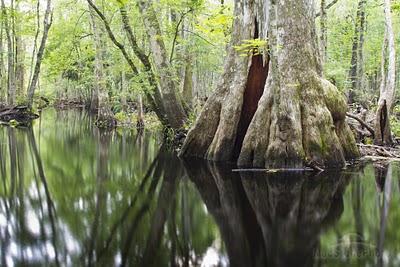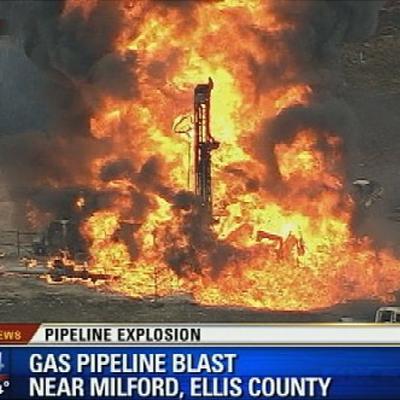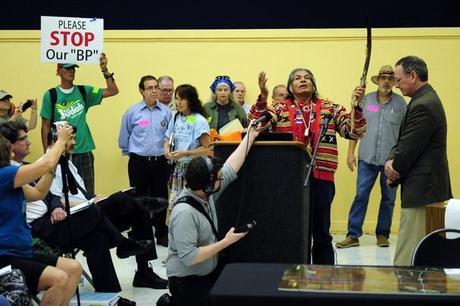
Cypress tree in the Green Swamp, an area threatened to be bisected by the Sabal Trail pipeline. The Green Swamp includes approx 500,000 acres of public forests and wetlands. Photo by Mac Stone
by Panagioti / Earth First! Newswire
What would you do if a corporation got permits to build a time bomb on your land?
Rural communities across Alabama, Georgia and Florida are joining the chorus of people asking this all-too-familiar question.
The issue of oil and gas transport has been forced into the minds of many people these days as the energy empire expands its frenzy for dirty and desperate extraction techniques.

This image is from an explosion in Texas, Nov 2013. It was one of dozens reported in the last year along, including several in Florida.
But resistance to proposed fossil fuel pipelines has been growing… almost as frequent as the steady stream of disasters from existing pipelines.
New York, Vermont, Pennsylvania, Texas, Oklahoma, Michigan, B.C., Ontario… Each of these places could tell pipeline battle stories from the frontlines of the eco-wars, ranging from depressingly tragic to courageously inspiring.
Now the swamp-dwellers of the southeastern US are jumping into the fray, and in a big way—1.1 billion cubic feet of gas per day kind of big.
Last week marked the end of a series of public hearings held by FERC (the Federal Energy Regulatory Commission) to solicit input for preparing an Environmental Impact Statement (EIS) on three pipeline projects seeking approval under the title Southeast Market Pipeline Project (SMP). The largest of the three is the Sabal Trail Pipeline.
Though the hearings have come to a close for the time being, the scoping period is open until April 20 for comments, questions and rage to be sent to FERC.
A total of thirteen hearings were conducted, starting on March 3 in Albany Georgia and ending in Clermont, FL on March 27. A group calling itself SpectraBusters popped up along the route to coordinate opposition to the permitting of the pipeline and hundreds of people turned out for the hearings, primarily local residents in opposition to having a pipeline through their homes, farms and forests.
This map gives a general sense of the route for Sabal Trail, though it does not include the southern most section in Martin County which are also being considered in the EIS.
Several corporations are tied to the SMP project, but the largest of them are Spectra and FPL—both companies who have faced ongoing scrutiny and full-fledged campaigns against them up and down the east coast.
While the multi-pipeline permitting process is no doubt being conducted in a streamlined fashion at the behest of industry interests, another reality is also surfacing as landowners and environmental groups along the entire route of these pipelines are uniting their opposition and realizing that a failed or stalled EIS for this project could mean victory on several fronts.
The current SMP project covers 650 miles of gas pipeline and nine compressor stations, though these permits are known to expand in “phases,” allowing companies like Spectra to add additional phases without the requirement of a full EIS. (This was done in a previous pipeline partnership between Spectra and FPL called the Gulfstream Pipeline which was heavily contested by Earth First! activists in South Florida in 2008.)
Voices against Sabal Trail
“We own 30 acres in Center Hill and we adamantly oppose the pipeline,” said Diane Cochran, speaking at a hearing in Clermont, FL.
“This big company, wanting to build this pipeline, has turned our dream into a nightmare.” The Cochran’s property would be cut in half by gas transmission line. It would be located only 121 feet from the couple’s water well and less than that from their backyard fire pit. “My family and I will never feel safe on our property, and will never feel safe having our children and grandchildren visit us on our property, and that rocks me to my core.”
“Here we are trying to save our property from a big corporation whose sole intent is to make billions of dollars, while our land is forever destroyed if it’s put there,” Cochran said.
Frank Atkins, age 85, was one of 150 people who attended a hearing in Dunnellon, FL to speak against Spectra’s pipeline on the land of his family’s cemetery. “I don’t want that through there. Enough’s in there by having the electrical line, and now they coming with a gas line.”
The last time an energy company installed its lines across Atkins’ family’s property, grave markers in a family-owned cemetery were displaced. He said that after Florida Power Corp. came through in the 1960s, he could not find the burial plot holding his mother, who died giving birth to him.
Now that a natural gas pipeline is slated to pass through his Citrus County land, Atkins said he’s concerned the one-acre cemetery, where more family members are buried, might be affected again.
The section that could pass through Atkins land is Sabal Trail’s 24-inch-wide, 24-mile-long offshoot, intended to carry fuel to a new Duke Energy power plant that’s expected to be operating by 2018… That is, if the pipeline isn’t stopped.
Another pipeline opponent, Tamara Robbins, noted that maps of the proposed route did not delineate bodies of water or waterways.
“Your experts should have already studied the geology of Florida,” she said. “You should know about the land of a thousand springs. And if you did, I can’t imagine you not recommending denial to the commission on a project that is not needed.”
Indigenous Opposition to the pipeline

Bobby C. Billie, Council of the Original Miccosukee Simanolee Nation, speaks against oil and gas drilling, March, 2014 in Collier County, FL. Photo by Corey Perrine, Naples News
Among opponents who have spoken against the project is Bobby C. Billie, a representative of the Council of the Original Miccosukee Simanolee Nation. Billie, who is a spiritual and clan leader among the Independent Traditional Seminole Nation, spoke of the pipeline fueling greed and further development in lands that were never legitimately owned by the US to begin with. Seminoles did not sign a treaty during the US-lead wars in the mid-1800s which failed in multiple attempts to remove them entirely from Florida, due primarily to a strong, successful resistance effort and the vast swampy terrain that the military was unaccustomed to.
Also in attendance at the Clermont FERC hearing was a representative of the Seminole Tribe of Florida’s Big Cypress Reservation. The Seminole Tribe, who exist as a separate entity from the Independent Traditionals, may be taking interest in the pipeline as it relates to their opposition to the construction of a 3,750 megawatt gas-fired FPL power plant in Hendry County, on the border of their reservation lands.
The FPL plant is currently facing legal challenges from the Tribe to the zoning change needed to accommodate it.
Spectra and FPL have not disclosed any plans for this pipeline project to connect directly to the massive Hendry County power plant proposal thus far, but it would appear as the prime candidate for this similarly massive quantity of gas into the region.
Give ‘Em Hell, Preferably Before April 20
FERC representative John Peconom did little to assuage critics when he confirmed that FERC staff had never recommended denial of a pipeline project. Nor did it help influence opponents when he acknowledged that FERC is funded by fees paid by the companies it regulates.
According to data from the federal Pipeline and Hazardous Materials Safety Administration, there have been about 8,000 “significant incidents” reported since 1986, resulting in more than 500 deaths and more than 2,300 injuries. News from many of these incidents can be found here.
FERC representative say people have until April 20 to submit comments at www.ferc.gov. You can email John Peconom with questions: [email protected], or call (202) 502-6352.
You can also file a paper copy by sending mail to: Kimberly D. Bose, Secretary, FERC, 888 First St NE, Room 1A, Washington DC, 20426.

